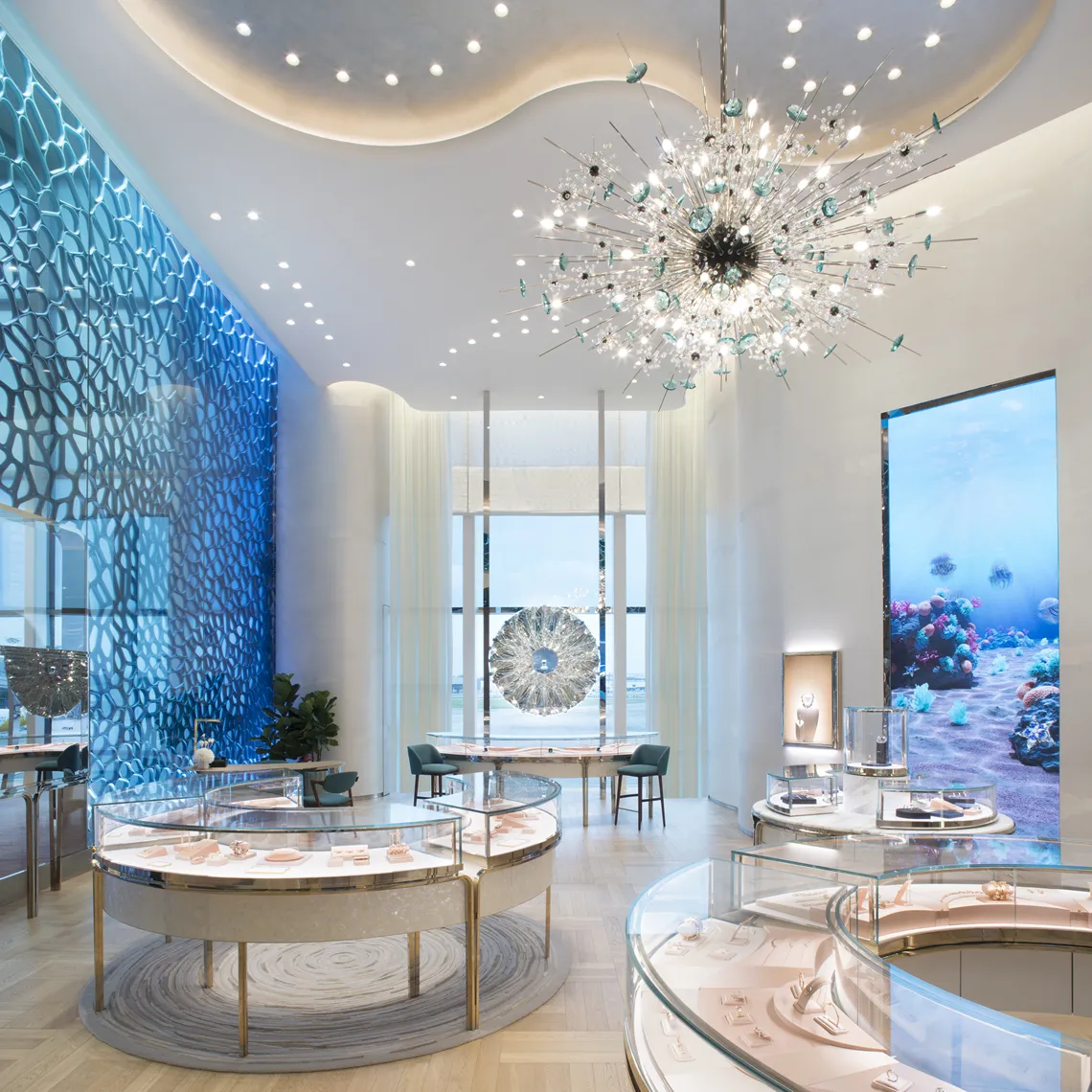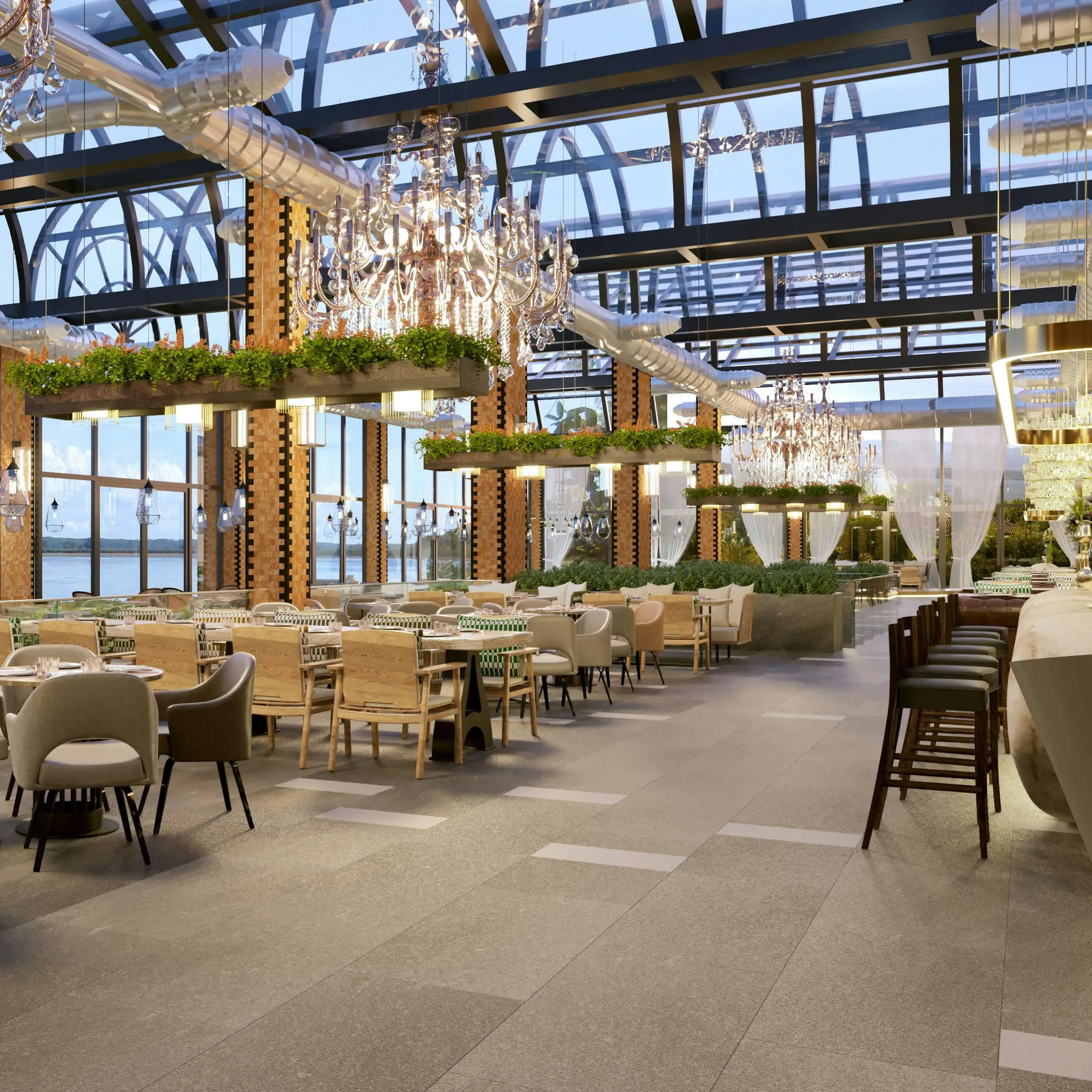Luxury In The Age Of Recycling
Tiffany & Co.'s new store at Singapore Changi Airport emphasizes sustainability with its coral-inspired facade made with 3D printer technology using recycled ocean plastic.
Sustainability-oriented studies of luxury brands continue to guide the course of design and architecture. One of the most recent examples of this approach is the Tiffany & Co. store located in Singapore Changi Airport's Piazza Garden. In the design of the store, which has an important place in terms of understanding the environmentally friendly vision of the brand, we see the signature of the architectural office MVRDV, which has a global say with the projects they have accomplished. MVRDV collaborated with the Amsterdam-based company Aectual and Milan-based engineers BUROMILAN in the production process of this façade, which fascinates with its unique form.
The store's coral-shaped facade is highly alluring and engaging. In the concept design process of the façade, which was created using recycled plastic and 3D printing, the architectural office MVRDV started from a series of characteristic design features that appeal to Tiffany's identity and history. From touches of Tiffany Blue to the use of innovative materials inspired by Louis Comfort Tiffany's contributions to glass art in the late 19th century, it is possible to feel these features not only on the façade, but throughout the store. Other elements inspired by Tiffany's design heritage include references to flora and fauna.
During the concept phase, the architects analyzed the local environment and the coral reefs of Singapore. Based on patterns seen in coral species, the team covered the store's façade with a screen with an organic, cell-like pattern. This screen reflects a gradient of color that shifts from Tiffany's signature blue to deep blue, reflecting the sea of Singapore.
The creative team, which created software to develop the pattern of the coral-inspired display so that the design could withstand various stresses, then decided on the materials to be used. The design, which was brought to life using materials obtained from recycled fishing nets, especially recycled plastic, is not only inspired by the oceans, but also undertakes the task of protecting them.







